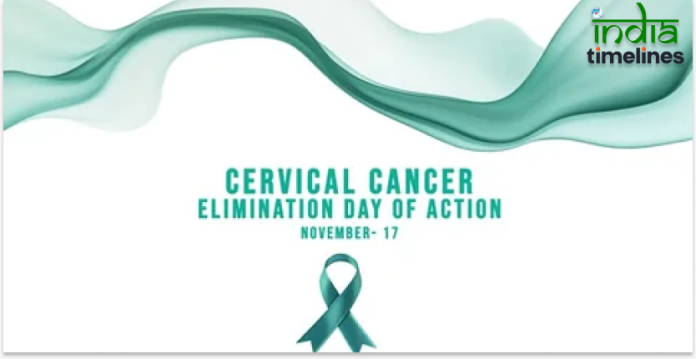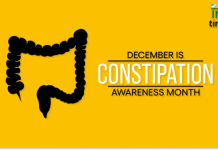
Cervical Cancer Elimination Day of Action 2024 marks a pivotal moment in the global fight to eradicate cervical cancer. Supported by the World Health Organization (WHO) and health organizations worldwide, this day is dedicated to raising awareness about cervical cancer prevention, promoting HPV vaccination, and improving access to screening and treatment. This year’s observance underscores a shared goal: to eliminate cervical cancer as a public health threat by educating communities, increasing access to care, and mobilizing policymakers around the world.
Why Cervical Cancer Elimination Matters
Cervical cancer is one of the most preventable forms of cancer due to the effectiveness of the HPV vaccine and early detection through routine screenings. However, it remains a serious health threat, particularly in regions where healthcare resources are limited. The key objectives of Cervical Cancer Elimination Day of Action 2024 include:
- Raising Global Awareness: Educating people about the preventability of cervical cancer and the importance of early detection.
- Promoting Vaccination and Screening: Advocating for widespread access to HPV vaccines and regular screenings.
- Strengthening Treatment Access: Supporting policies that make cervical cancer treatments affordable and accessible to all women.
The Current State of Cervical Cancer: Global Impact
Globally, cervical cancer affects hundreds of thousands of women each year, with a disproportionate impact in low- and middle-income countries. According to the WHO, in 2020 alone, over 340,000 women lost their lives to cervical cancer, many of whom could have been saved with proper prevention and treatment. This data illustrates the urgent need to prioritize elimination efforts, especially in underserved areas where resources are scarce.
Key Strategies for Cervical Cancer Elimination
The Cervical Cancer Elimination Day of Action 2024 emphasizes a multifaceted approach to reduce cervical cancer rates through preventive and curative measures.
1. Widespread HPV Vaccination
The HPV vaccine is a cornerstone of cervical cancer prevention. Key actions for increasing vaccination rates include:
- Raising Awareness: Educating communities about the HPV vaccine’s benefits and safety for girls and boys.
- Policy Support: Governments and NGOs can help by making vaccines affordable or free, especially in low-resource areas.
2. Improving Access to Screening
Regular screenings, such as Pap smears and HPV testing, detect precancerous changes early, making it easier to treat cervical cancer. Key initiatives include:
- Expanding Screening Facilities: Ensuring women in underserved regions have access to affordable and convenient screening services.
- Community Education: Raising awareness about the importance of regular screenings, especially for women over 21.
3. Making Treatment Accessible
Access to early treatment improves survival rates for cervical cancer. However, it remains a challenge in low-resource areas. Solutions include:
- Strengthening Healthcare Systems: Building healthcare infrastructure in remote areas to ensure consistent access to care.
- Reducing Treatment Costs: Supporting policies that make cervical cancer treatments financially accessible for everyone.
4. Advocacy and Education
Public awareness and education are vital in changing attitudes and behaviors related to cervical cancer prevention. Advocacy efforts focus on:
- Campaigns and Workshops: Engaging communities in educational campaigns about the importance of prevention and early detection.
- Engaging Community Leaders: Involving local leaders, healthcare professionals, and influential voices to spread awareness and support preventive practices.
WHO’s 2030 Global Strategy for Cervical Cancer Elimination
In 2020, the WHO introduced a strategic roadmap with the goal of eliminating cervical cancer worldwide by 2030. The strategy includes three ambitious targets:
- Vaccinate 90% of girls with the HPV vaccine by age 15.
- Screen 70% of women by age 35 and again by 45 with high-performance tests.
- Treat 90% of women with precancerous lesions and manage 90% of invasive cancer cases.
Achieving these targets could reduce the incidence of cervical cancer by 40% within the next century, potentially saving millions of lives.
How You Can Support Cervical Cancer Elimination
Beyond large-scale policies and healthcare improvements, individual actions can contribute significantly to the global goal of cervical cancer elimination. You can make a difference by:
- Getting Vaccinated and Screened: Staying proactive about your health by scheduling screenings and vaccinations.
- Raising Awareness: Sharing information on social media or in community spaces to educate others about cervical cancer prevention.
- Supporting Policy Change: Advocating for legislation that increases funding for HPV vaccination programs and cervical cancer screening initiatives.
India Time Lines
Conclusion
Cervical Cancer Elimination Day of Action 2024 reminds us of the progress made and the work still ahead in eliminating cervical cancer worldwide. By increasing access to HPV vaccinations, promoting regular screenings, making treatments accessible, and strengthening community education, we can envision a future without cervical cancer. Together, let’s make cervical cancer a relic of the past, creating a world where every woman is free from the burden of this preventable disease.
FAQs
1. What is the goal of Cervical Cancer Elimination Day of Action?
This day aims to raise awareness, promote preventive practices, and advocate for global cervical cancer elimination through HPV vaccination, screening, and accessible treatment.
2. How does the HPV vaccine prevent cervical cancer?
The HPV vaccine protects against high-risk strains of HPV, which cause the majority of cervical cancer cases.
3. Who is eligible for the HPV vaccine?
The HPV vaccine is recommended for girls and boys, usually between the ages of 9 and 15, to provide early protection against HPV infection.
4. How often should women get screened for cervical cancer?
Women should begin regular screenings around age 21, with the frequency depending on individual health guidelines and screening type.
5. What role do governments play in cervical cancer elimination?
Governments can support cervical cancer elimination by funding vaccination programs, improving healthcare infrastructure, and making screenings and treatments accessible to all.



































